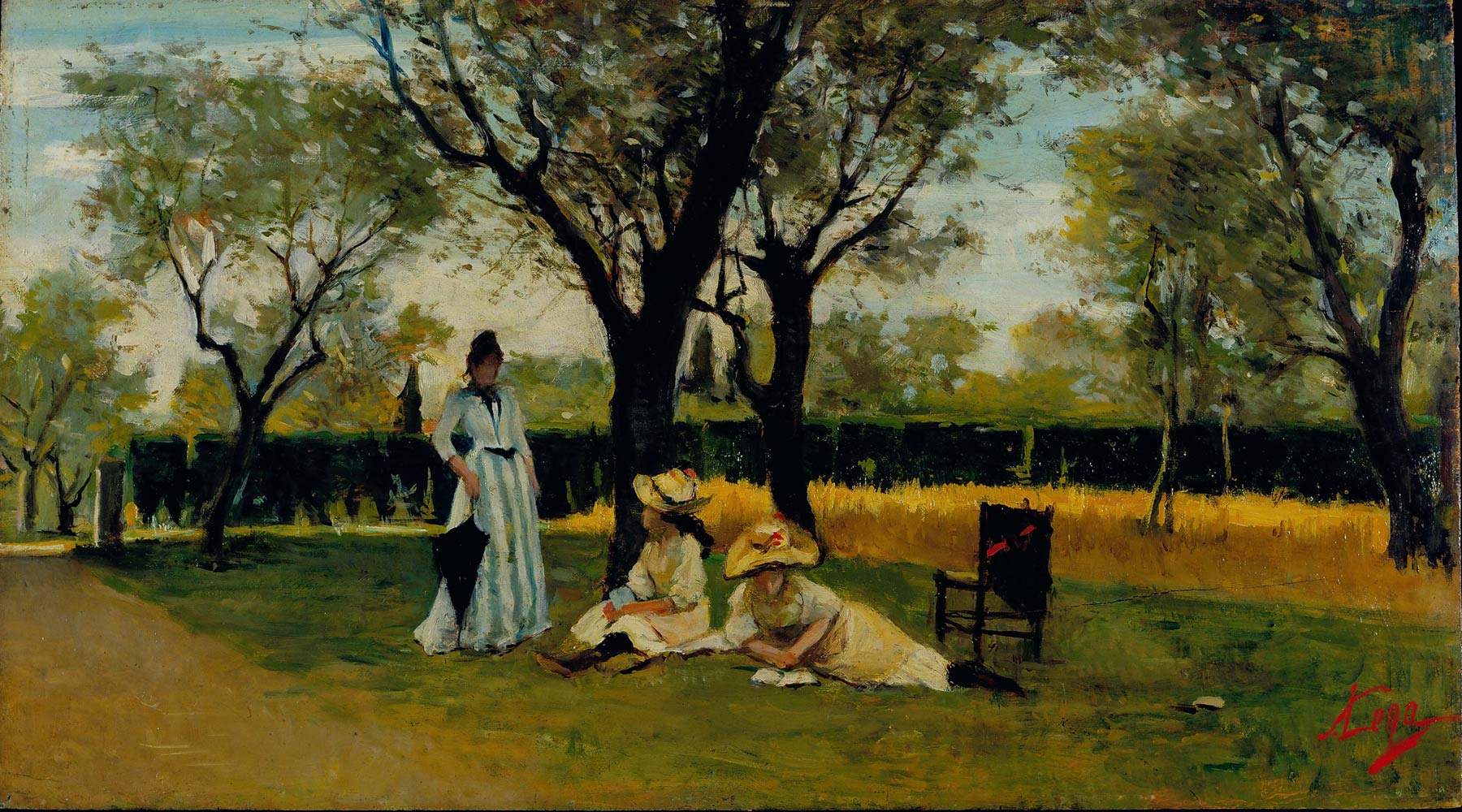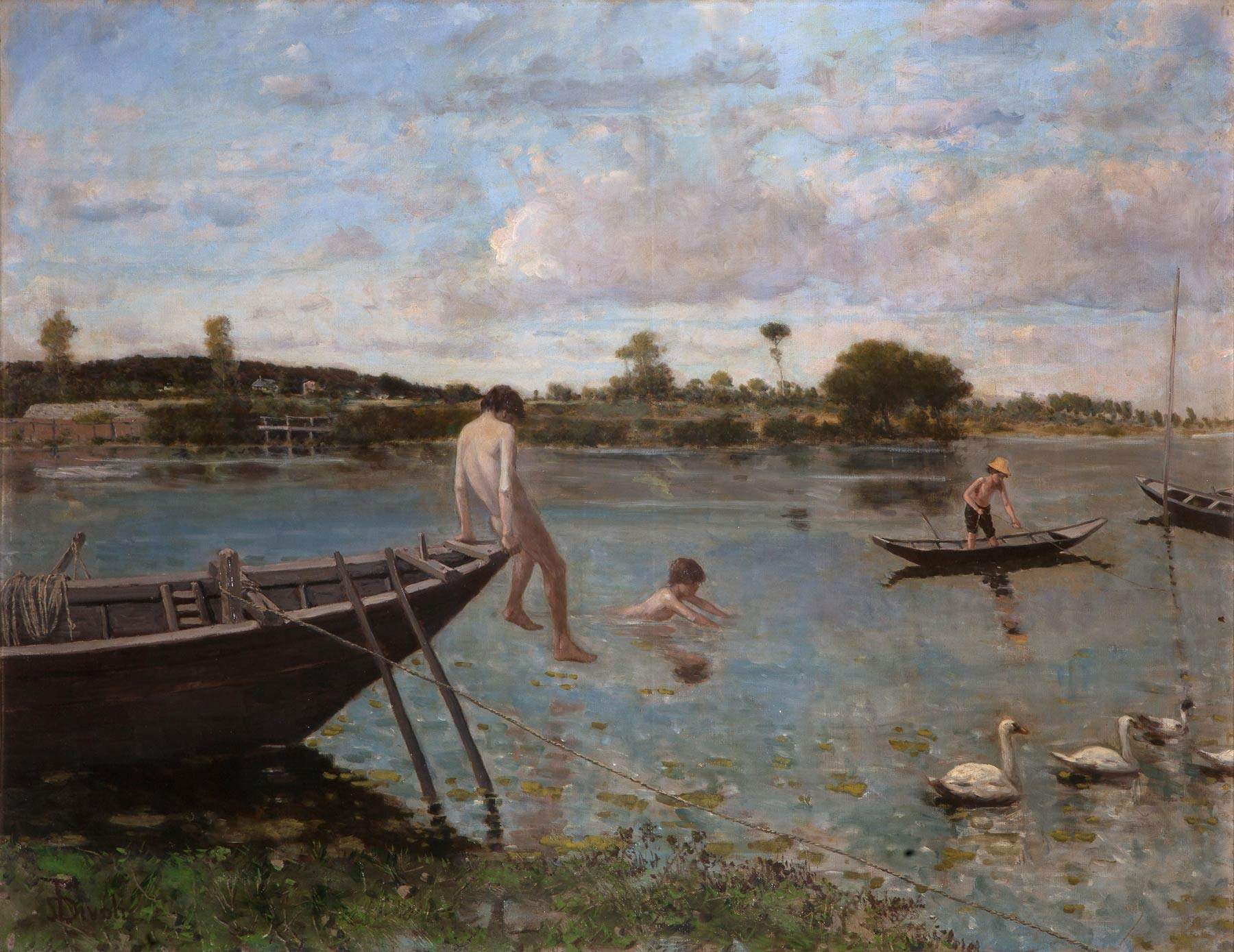by Redazione , published on 10/07/2020
Categories: Exhibitions
/ Disclaimer
From October 24, 2020 to April 18, 2021, Palazzo Zabarella in Padua is hosting the exhibition 'The Macchiaioli. Masterpieces from Resurgent Italy'.
From October 24 to April 18, 2021, Palazzo Zabarella in Padua is hosting a major exhibition on the Macchiaioli, entitled I Macchiaioli. Masterpieces of a Resurgent Italy. A review dedicated to a group of artists capable of anticipating painters such as Monet, van Gogh, and Gauguin, thanks mainly to their way of representing light and landscape. The world of the Macchiaioli is made up of light, sunshine, clouds, flowering balconies, laundry hung out to dry, young women gazing absorbedly at the landscape being drawn outside the window: these are images of an Italy dated to the 19th century, still unfinished, in socio-political terms, but iconically recognizable, a concrete sign of a precise and beloved identity.
The exhibition intends to retrace one of the public’s most beloved movements, but with the declared intention of not wanting to be merely captivating: the idea is to reopen an important chapter in our artistic history and to enrich it with unprecedented viewpoints and rigorous scientific research through often neglected sources. The project thus revolves around the network of collectors and patrons woven around the protagonists of the movement, such as Silvestro Lega, Giovanni Fattori, Giovanni Boldini, Telemaco Signorini, Adriano Cecioni, Odoardo Borrani, Raffaello Sernesi, and Vincenzo Cabianca.
Curated by two experienced art historians, Giuliano Matteucci and Fernando Mazzocca, with the decisive contribution in the catalog of two scholars who are experts on the Macchiaioli, Silvio Balloni and Claudia Fulgheri, the exhibition will present famous works and intense masterpieces alongside paintings that offer previously unseen glimpses. The exhibition in Padua will then give the opportunity to “meet” people who flanked and supported the work of the masters: fellow painters who immediately grasped their innovative scope and certain artistic value, such as Cristiano Banti, Michele Gordigiani, and Ernesto Bertea. Friends patrons who often welcomed them into their families, such as the Cecchini, Bandini, and Batelli families, who played an important role in Signorini’s tormented biographical story. A special place is occupied by Diego Martelli, a critic and man of letters, who not only always actively supported the Macchiaioli, but also prepared for them, in a sense, a place of choice, a place of the heart and inspiration: his house in Castiglioncello, always open for all of them, transforming a bourgeois vacation village into a symbol of creativity and freedom of vision.
For Palazzo Zabarella, this is a return: back in 2004, in fact, the Paduan exhibition venue hosted an important exhibition on the Macchiaioli, and this year’s reconfirms, therefore, the institute’s vocation for hosting major reviews of 19th-century art. This year’s exhibition will host more than one hundred masterpieces: for all the information you can visit the Palazzo Zabarella website. Below are images of some of the works on display.
 |
| Silvestro Lega, At the Villa of Poggio Piano (1888-1889; oil on panel 34x60 cm; Private collection) |
 |
| Giuseppe Abbati, From the Cellar of Diego Martelli (c. 1866; oil on panel 38 x 29 cm; Private collection) |
 |
| Silvestro Lega, The Alms (1864; oil on canvas, 718x124 cm; Private_collection) |
 |
| Telemaco Signorini, Waiting (1866-1867; oil on canvas, 119x64 cm; Livorno, Angiolini Collection) |
 |
| Odoardo Borrani, Reaping in San Marcello. Harvesting the Wheat on the Apennines (1861; oil on canvas; Private collection) |
 |
| Serafino De Tivoli, The Ancient Fishery at Bougival (1877-1878; oil on canvas, 95x116 cm; Private Collection) |
 |
| Vincenzo Cabianca, In the Sun (1866; oil on canvas, 75x90 cm; Bologna, Private Collection) |
 |
| Giovanni Fattori, The Arno at Bellariva (c. 1875; oil on canvas, 37x101 cm; Livorno, Angiolini Collection) |
 |
| Telemaco Signorini, Bambini colti nel sonno (1896; oil on cardboard, 95x40 cm; Private collection) |
 |
| Silvestro Lega, Little Girls Making Ladies (1872; oil on canvas, 60x100; Viareggio, Matteucci Institute) |
 |
| A major exhibition on the Macchiaioli is coming to Padua, from Lega to Fattori and beyond |
Warning: the translation into English of the original Italian article was created using automatic tools.
We undertake to review all articles, but we do not guarantee the total absence of inaccuracies in the translation due to the program. You can
find the original by clicking on the ITA button. If you find any mistake,please contact us.







































